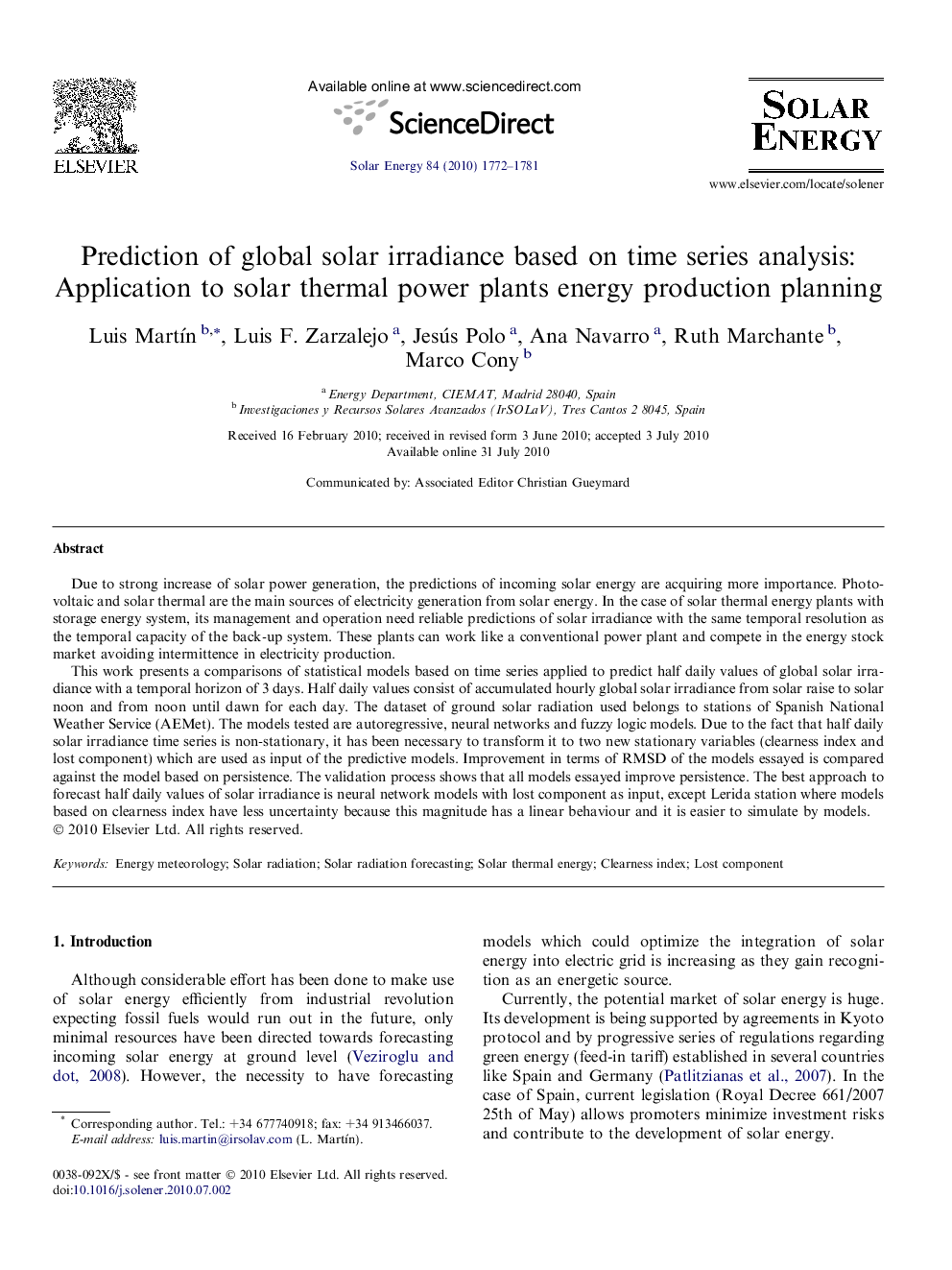| Article ID | Journal | Published Year | Pages | File Type |
|---|---|---|---|---|
| 1551519 | Solar Energy | 2010 | 10 Pages |
Due to strong increase of solar power generation, the predictions of incoming solar energy are acquiring more importance. Photovoltaic and solar thermal are the main sources of electricity generation from solar energy. In the case of solar thermal energy plants with storage energy system, its management and operation need reliable predictions of solar irradiance with the same temporal resolution as the temporal capacity of the back-up system. These plants can work like a conventional power plant and compete in the energy stock market avoiding intermittence in electricity production.This work presents a comparisons of statistical models based on time series applied to predict half daily values of global solar irradiance with a temporal horizon of 3 days. Half daily values consist of accumulated hourly global solar irradiance from solar raise to solar noon and from noon until dawn for each day. The dataset of ground solar radiation used belongs to stations of Spanish National Weather Service (AEMet). The models tested are autoregressive, neural networks and fuzzy logic models. Due to the fact that half daily solar irradiance time series is non-stationary, it has been necessary to transform it to two new stationary variables (clearness index and lost component) which are used as input of the predictive models. Improvement in terms of RMSD of the models essayed is compared against the model based on persistence. The validation process shows that all models essayed improve persistence. The best approach to forecast half daily values of solar irradiance is neural network models with lost component as input, except Lerida station where models based on clearness index have less uncertainty because this magnitude has a linear behaviour and it is easier to simulate by models.
